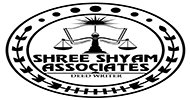Relinquishment Deed is a document whereby a person releases his share or claim in a property. When the owner of a property dies and his/her legal heirs agree to relinquish (leave) their respective share of the concerned property in favour of one or more of the legal heirs, this document is made.
The term Relinquishment refers to the abandoning and surrender of the rights, title and interest, by one co-owner of a property in favor of the other co-owners. The consequence of Relinquishment of one co-owner share in a property is the enlargement of the shares of the other co-owners. The steps involved in the Registration of a Relinquishment Deed are as follows:
- The Relinquishment Deed is drafted/prepared by an Advocate/legal expert.
- Stamp Paper is purchased for the execution.
- The Government registration fee has to be paid.
- Date is fixed for the registration in the Sub Registrar office.
- Both the parties and 2 witnesses visit the sub registrar office on the fixed day for the registration of Release Deed.
Relinquishment Deed or a release deed is generally used to transfer share in property after the death of a person. It is used to transfer ownership when a person dies without leaving behind a will (i.e. dies intestate) and his legal heirs inherit his property as per the provisions of the Hindu Succession Act, 1956. In such a case, relinquishment deed is used for transferring the shares of the legal heirs in favour of one of them and then getting the Mutation done in favour of the legal heir in the records of MCD, DDA or L&DO. A relinquishment deed needs to be drafted carefully. A deed is subject to a close scrutiny by the Sub Registrar because it is often used to save the stamp duty payable on a gift deed.
Contact Us
Call/WhatsApp us: +91 7011261376
Email us: email.ssassociates@gmail.com
